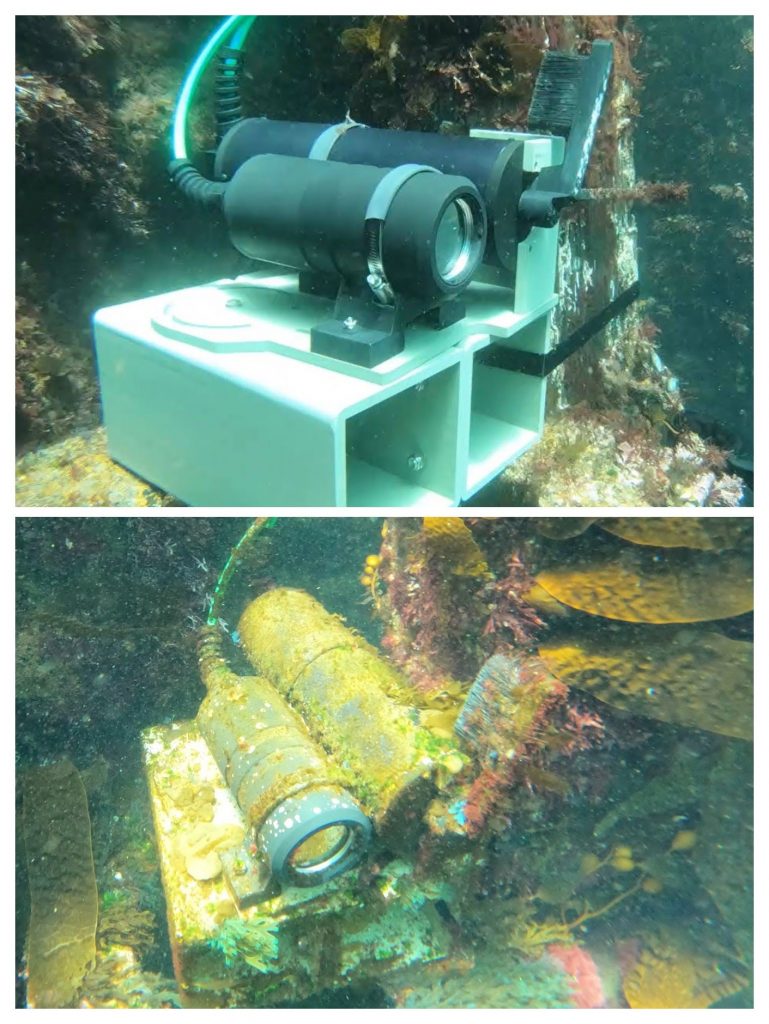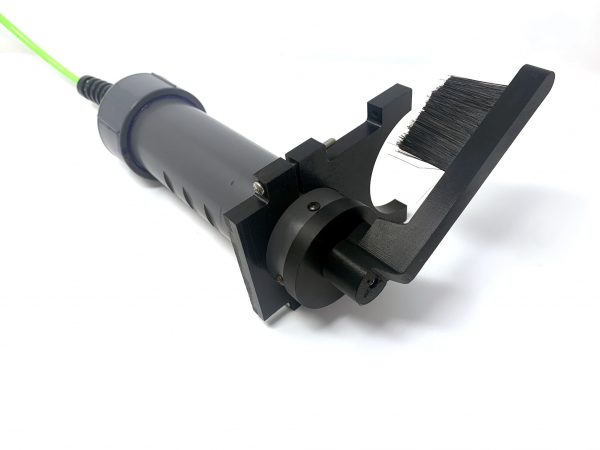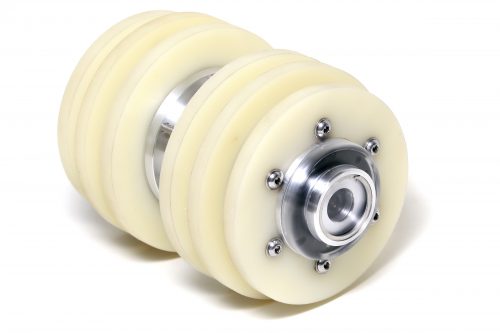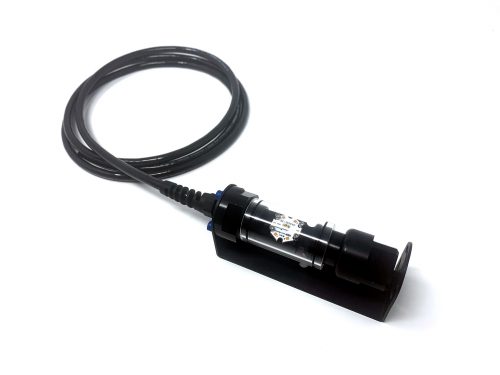Product Description
After corrosion, bio-fouling is probably the greatest challenge to keeping underwater cameras, lights and instruments in good working order. SubAqua Imaging Systems (SAIS) Wiper for Flat Surfaces is designed to wipe flat surfaces like the front window of a camera, light or other underwater instrument. The wiper is an Ethernet or IoT device with full connectivity to the web so that it can be accessed from anywhere that has a web connection to it. From the web interface, the user can:
- Program the wiper to complete wipes on a time-interval of minutes or hours.
- Modify the angle through which the wiper sweeps .
- Instantly activate the wiper. If there is something on your camera lens, instead of waiting for the next cycle, you can have the wiper complete a cycle immediately from the web interface.
- Set IP address and login password
The wiper itself is comprised of synthetic bristles which are less attractive to marine flora and fauna. The arm is secured to the wiper shaft with a single bolt so that it can easily be swapped out underwater when necessary. The external surfaces of the wiper are all plastic with no exposed metal so there are no surfaces to corrode.
SAIS has wiper brackets that will mate the wiper assembly to any one of our flat port cameras or lights.. Custom brackets are available at low cost for your specific needs.

SubAqua Imaging Compact Camera and Flat Surface Wiper shown on the day they were installed and 3 months later. The system was left unattended in a shallow cove on Anacapa Island, CA during the 3 months of highest annual marine growth. Note that only the portion of the camera in the path of the wiper remains free of biofouling.
There are several options available for each camera and light. The bodies of the cameras can be made from plastic or metal and the cables and connectors or all devices have several options which should be considered when purchasing.
- Standard cable or heavy duty cable
- Permanently attached cable with a cable gland only or with a fail-safe bulkhead
- Dry-Mate Connector
- Wet-Mate Connector
For your application you can decide on the options that will most suit by considering the following:
Cable – Standard or Heavy-Duty?
- The cable can be either standard or heavy duty. For most applications, the standard cable is good. If you expect more extreme conditions (open water, surge, waves, chaffing, etc) or would like WET-PLUGGABLE connectors, the heavy duty cable is recommended.
Connectors – Permanent or removable?
- The cable can be permanently attached to the camera directly or with a bulkhead. This saves cost and reduces the number of potential failure points for situations where the camera will be installed for long periods of time without being moved.
- The permanently attached cable with a cable-gland only, is the lowest cost option but should only be used in tranquil environments like aquariums or ponds where the water is not moving and the camera will rarely, if ever be moved.
- The permanently attached cable with a fail-safe bulkhead adds an extra layer of protection. The bulkheads provide protection if there is a break in the cable which the cable gland only does not. If the cable jacket is torn or broken, the cable gland will not prevent water leaking along the cable to enter into the camera housing over time. The bulkhead models prevent this by providing a water barrier at the cable camera connection.
- Alternatively, the cable can be detachable by using one of the underwater connector options.
- If you will need to detach the cable from the camera and are using the standard cable, then the DRY-MATE connector is the option. As the name implies, the cable can only be attached or detached from the camera at the surface when everything is dry.
- For heavy duty cable, you need the WET-MATE connector. This option allows the camera to cable connection to be detached and reattached even when submersed in water.
Body materials – Plastic or Metal?
- Plastic housings are great for applications where the camera is going to be permanently installed in the marine environment or other highly corrosive liquids at a depth of 60m (200ft) or less. At SAIS, we have designed most of our cameras to have a “No exposed Metal” option, meaning that no part of the camera in contact with water is made from metal. This greatly reduces the likelihood of the camera being damaged by the environment.
- For deeper applications, we offer our cameras in an anodized aluminum body. To get the best corrosion protection, sacrificial zinc anodes will be needed for aluminum placed in saltwater. All our aluminum cameras are provided with a mounting holes for sacrificial anodes.
- For superior corrosion protection and deep ocean applications, we offer versions of all cameras in Stainless steel and titanium versions.




